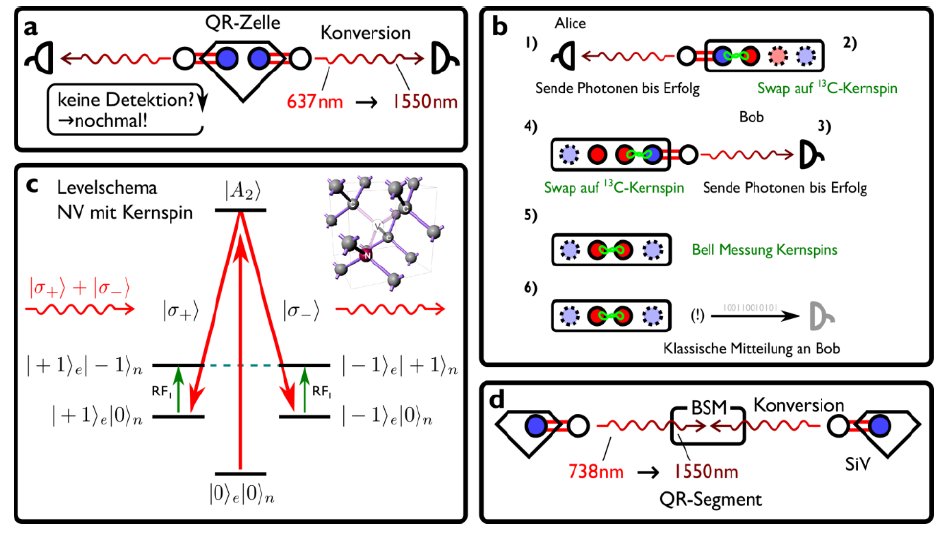Q.Link.X
Color centers in diamond have the advantages of long quantum memory coherence times of electron and core spins in connection with efficient optical transitions, functioning as an interface to photons for the transfer of quantum information. The interface to photons is either facilitated by a combination of micro waves- and optical transitions (nitrogen-vacancy centers, NV centers) or by a pure optical spin-control (silicon-vacancy centers, SiV centers). Diamond as a solid state platform provides the advantage of an “on-chip” integration with photonic elements for an aimed enhancement of the spin-light interaction. The goal of the diamond subproject from the group of apl. Prof. Dr. Cyril Popov is the realization of diamond-based photonic structures (nanopillars, photonic crystals, wave guides) with the help of electron beam lithography and reactive ion etching. These mentioned structures will be coupled with color centers (NV and SiV) to increase the photon collection efficiency. To achieve this, implantation masks will be developed for the deterministic implantation of nitrogen or silicon and hence for the resulting creation of color centers. An integration of the photonic structures with metal electrodes and antennas will enable the coherent manipulation and efficient read-out of the spin state. The structures will serve as spin-photon interfaces as well as components of a quantum memory for investigations by Q.Link.X project partners.
Project Partners
- Prof. Dr. C. Becher, University Saarbrücken
- Prof. Dr. J. Wrachtrup / Dr. I. Gerhardt, University Stuttgart
- Prof. Dr. D. Hunger, Karlsruher Institute for Technology (KIT)
- Prof. Dr. O. Benson / Prof. Dr. U. Ramelow, HU Berlin
- Prof. Dr. F. Jelezko / Prof. Dr. A. Kubanek / Prof. Dr. M. Plenio, University Ulm
- Prof. Dr. F. Schmidt-Kaler, University Mainz
- Prof. Dr. C. Silberhorn, University Paderborn
- Prof. Dr. R. Freund , Heinrich Hertz Institute Berlin (HHI)
Picture gallery


